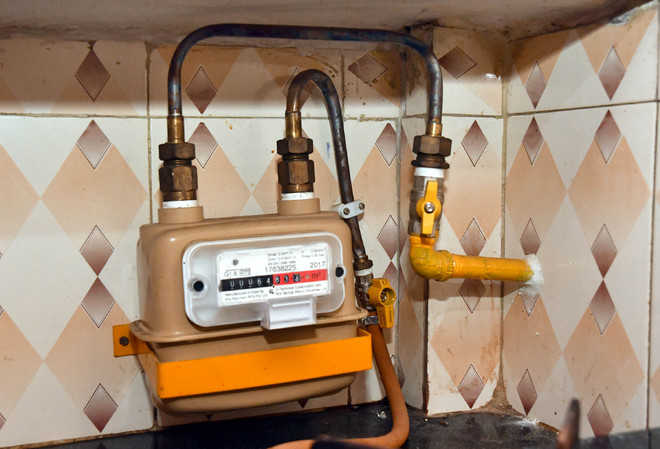Jagvir Goyal
Direct cooking gas supply is becoming a common feature. The system has been prevalent in metros like Mumbai, Bengaluru, Chennai and even Delhi for the past several years, though for cities in the region it will be a new thing. Cooking gas supplied in cylinders is Liquefied Petroleum Gas (LPG) while the cooking gas supplied through pipes is Natural Gas (PNG). Chemically, the two gases have different composition. LPG is Propane or Butane or a mix of the two gases. PNG is mostly Methane. PNG is simple natural gas transported through pipes.
Advantages: PNG has many advantages over LPG, the biggest being its continuous availability. There is no hassle of booking LPG cylinders, awaiting their delivery, remaining available for receiving the cylinder, transporting the filled cylinder to the cylinder’s cabin and handing over of empty cylinder to the delivery boy. Worries of less net weight of cylinder or supply of an expired cylinder also vanish with this system. Being lighter than air, PNG dissipates quickly in case of any leakage. Moreover, while LPG is pre-paid, PNG is post-paid.
Calorific value: LPG has higher calorific value than PNG. In India, calorific value of PNG ranges from 8,000 to 9,500 Kcal per kg and on an average is taken as 9,000 Kcal per kg. LPG has a higher calorific value of about 11900 Kcal per kg. Comparing in Mega Joules per cum, LPG has calorific value of about 90-95 MJ/cum while PNG has calorific value of 35-40 MJ/cum only. That’s why cooking period is more in case of PNG than that with LPG.
MMBTU comparison: 1 LPG cylinder has 14.2 kg of LPG having a calorific value of 46.1 Mega Joule (MJ) per kg. Therefore an LPG cylinder has 654.6 MJ of heat. 1MJ has 948 BTU of heat. Thus, a LPG cylinder has 62,0579 BTU of heat which are equivalent to 0.62 MMBTU. If one cylinder costs Rs 830 (without subsidy), it means, Rs 1337 per MMBTU from LPG. This is quite high in comparison to the cost of PNG.
Getting supply: The consumer has to simply apply to the PNG suppliers who charge a refundable security amount of about Rs 5,000 per connection for the equipment. In addition an installation cost of around Rs 1,500 is charged. Thereafter, one can simply forget about cooking gas arrangement for his house. A resident can pay the monthly gas bill through the mobile App of the gas supplier and can also lodge a complaint there.
Equipment: Gas suppliers lay a network of pipes in the area where PNG is to be supplied and further lay GI pipeline to the house which has applied for PNG connection. An installation valve with lock is provided on the pipeline followed by a regulator and a meter. From the meter, the GI pipeline is laid up to kitchen countertop where an appliance valve is provided to connect to the flexible tube from the burner. The network is laid by skilled technicians of the gas supplier.
Cost comparison
Cost wise, PNG proves to be cheaper than LPG. While LPG is supplied at a fixed rate per cylinder containing 14.2 kg of LPG, PNG is billed on MMBTU basis. MMBTU is a unit of heat which means Metric Million British Thermal Units. Cost of PNG varies from city to city depending upon the length of transportation of gas. PNG costs about Rs 630 per MMBTU in Ahmedabad and nearly Rs 720 per MMBTU in NCR.
— The writer is former HoD and Engineer-in-Chief, Civil Engineering Dept in a Punjab PSU
Unlock Exclusive Insights with The Tribune Premium
Take your experience further with Premium access.
Thought-provoking Opinions, Expert Analysis, In-depth Insights and other Member Only Benefits
Already a Member? Sign In Now










